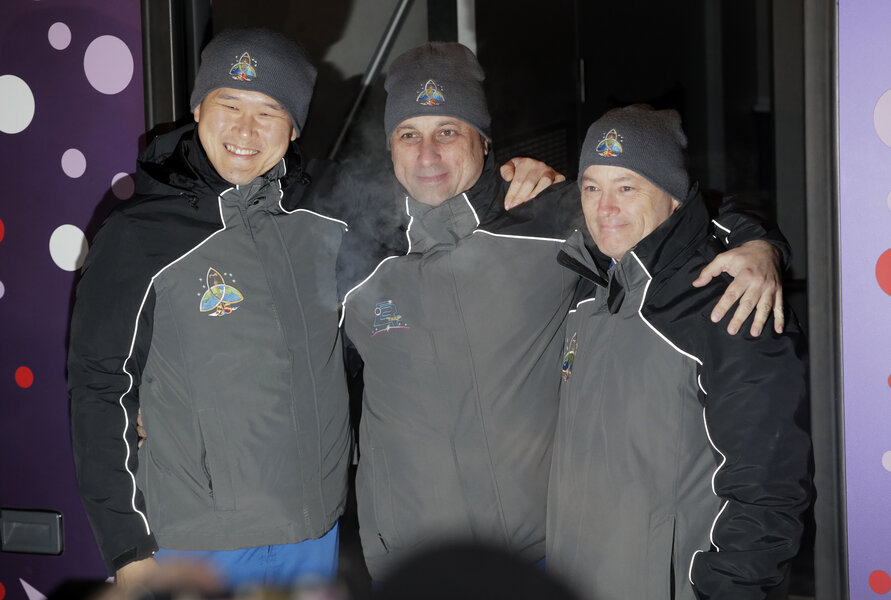An orbiting message of peace
Loading...
Right now a man-made object the size of a football field is orbiting some 250 miles above Earth. It’s so large it can be seen from the ground with the naked eye.
For more than 17 years humans have occupied the International Space Station. The 53 crews that have rocketed aloft have come from 10 nations; in all, people from 17 countries have visited.
In mid-December the latest three-person crew arrived, bringing astronauts from Russia, Japan, and the United States. They joined two Americans and a Russian already midway through a stay in near space.
The arrival ceremony for newcomers is simple and informal: Each one receives a warm hug from each of those already aboard.
At about the same time the new crew members arrived, an unmanned vehicle brought fresh supplies, including Christmas presents for the crew from family and friends. Photos show the station adorned with holiday decorations, including stockings hung with all due care. On Dec. 25 many miles of airless space will separate crew members from their homes and families.
The space station conducts important scientific work, taking advantage of its low-gravity environment as the station “falls” around Earth in orbit. The numerous experiments contribute to advances in many fields as well as to knowledge needed for future missions to the moon and Mars.
The closest thing to a station crisis occurred in 2003 when the space shuttle Columbia tragically disintegrated during reentry into Earth’s atmosphere, grounding the US shuttle fleet. The station crews had lost their ride home. But after only a short delay a Russian Soyuz capsule was able to give the next rotating crew a lift. Today Russia handles the space taxi chores.
Throughout the station’s history, no lives have been lost among the nearly 400 visitors. And despite many nationalities working together no diplomatic incidents have created a commotion back on Earth.
The US and Russia are committed to maintaining the joint space station until at least 2024. The Russians are talking about breaking off to build a station of their own. (One recent news report suggested Russia might build a space hotel as well – think of those rooms with a view!)
The station’s international crews work in close quarters and in a dangerous environment for peaceful purposes and for the advancement of human knowledge. As many visitors to space have reported, when they look earthward they see one beautiful “big blue marble” without borders hanging in space. Their view might be called sub specie aeternitatis (“from the perspective of the eternal”).
Two millenniums ago wise men saw a light in the sky, a moving star. It led them to a cradle, a baby, and to a universal message of “on earth peace, good will toward men.”
The space station seen circling Earth serves as a modern reminder of what humanity can accomplish when nations work together in peace.







